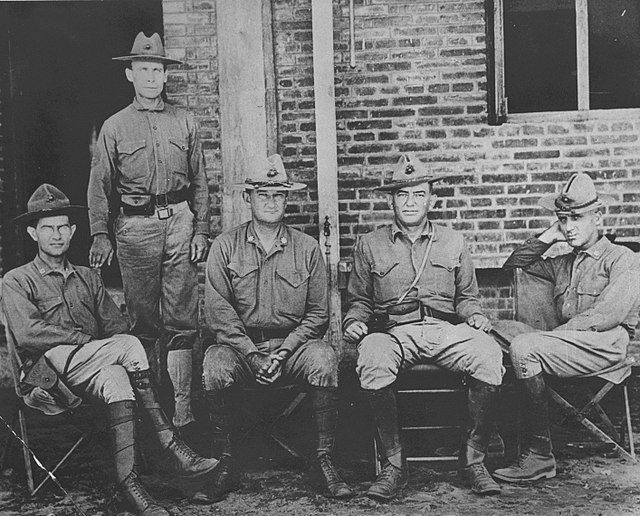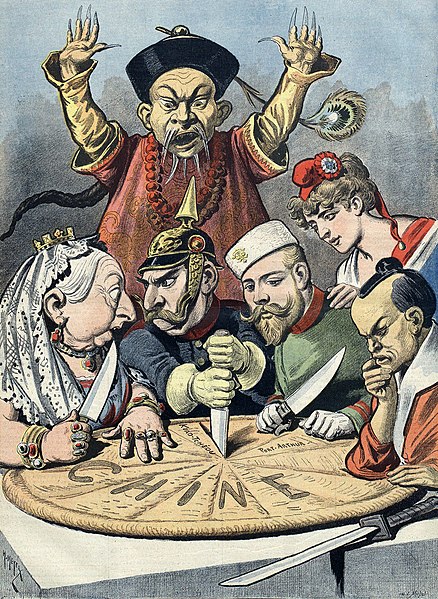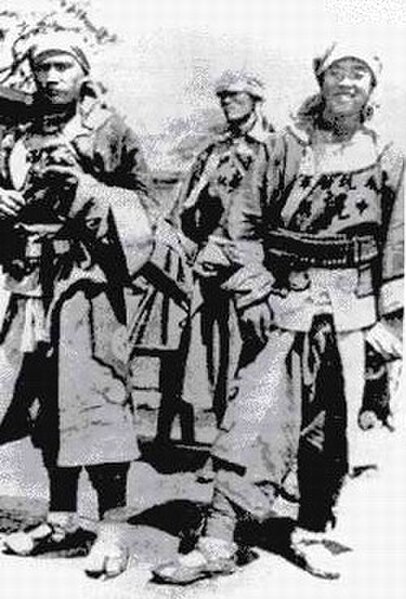Major General Smedley Darlington Butler, nicknamed the Maverick Marine, was a senior United States Marine Corps officer. During his 34-year career, he fought in the Philippine–American War, the Boxer Rebellion, the Mexican Revolution, World War I, and the Banana Wars. At the time of his death, Butler was the most decorated Marine in U.S. history. By the end of his career, Butler had received sixteen medals, including five for heroism; he is the only Marine to be awarded the Brevet Medal as well as two Medals of Honor, all for separate actions.
Butler in uniform, c. 1929
Smedley Butler, c. 1898
Marine Officers at Veracruz. Front row, left to right: Wendell C. Neville; John A. Lejeune; Littleton W.T. Waller, Commanding; Smedley Butler
Butler (far right) with other Marines in Vera Cruz, Mexico, 1914. From left to right: Sgt. Maj. John H. Quick, Maj. Gen. Wendell Cushing Neville, Lt. Gen. John Archer Lejeune
The Boxer Rebellion, also known as the Boxer Uprising or the Boxer Insurrection, was an anti-foreign, anti-imperialist, and anti-Christian uprising in North China between 1899 and 1901, towards the end of the Qing dynasty, by the Society of Righteous and Harmonious Fists, known as the "Boxers" in English due to many of its members having practised Chinese martial arts, which at the time were referred to as "Chinese boxing". It was defeated by the Eight-Nation Alliance of foreign powers.
A company of Boxers in 1901
A French political propaganda cartoon depicting China as a pie about to be carved up by Queen Victoria (United Kingdom), Kaiser Wilhelm II (Germany), Tsar Nicholas II (Russia), Marianne (France) and a samurai (Japan), while Boxer leader Dong Fuxiang protests
Chinese Muslim troops from Gansu, also known as the Gansu Braves
Admiral Seymour returning to Tianjin with his wounded men on 26 June








